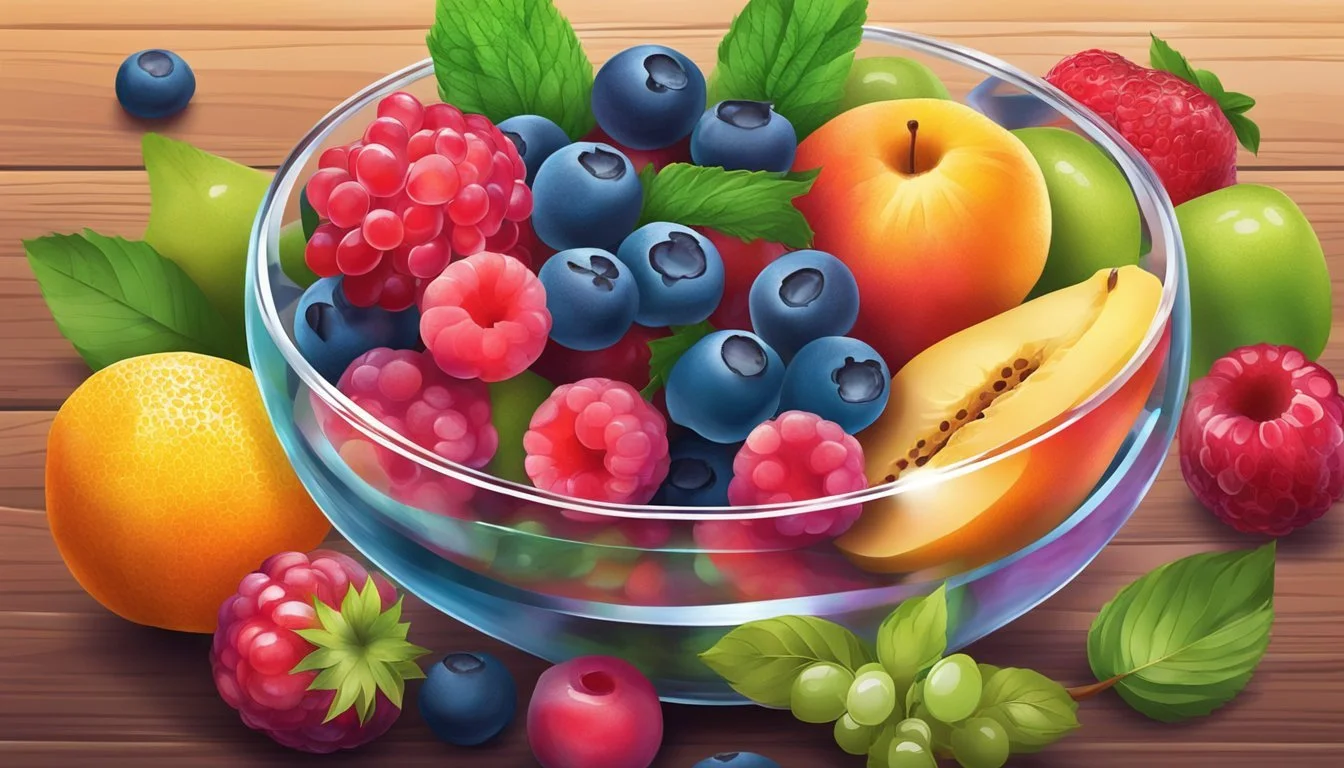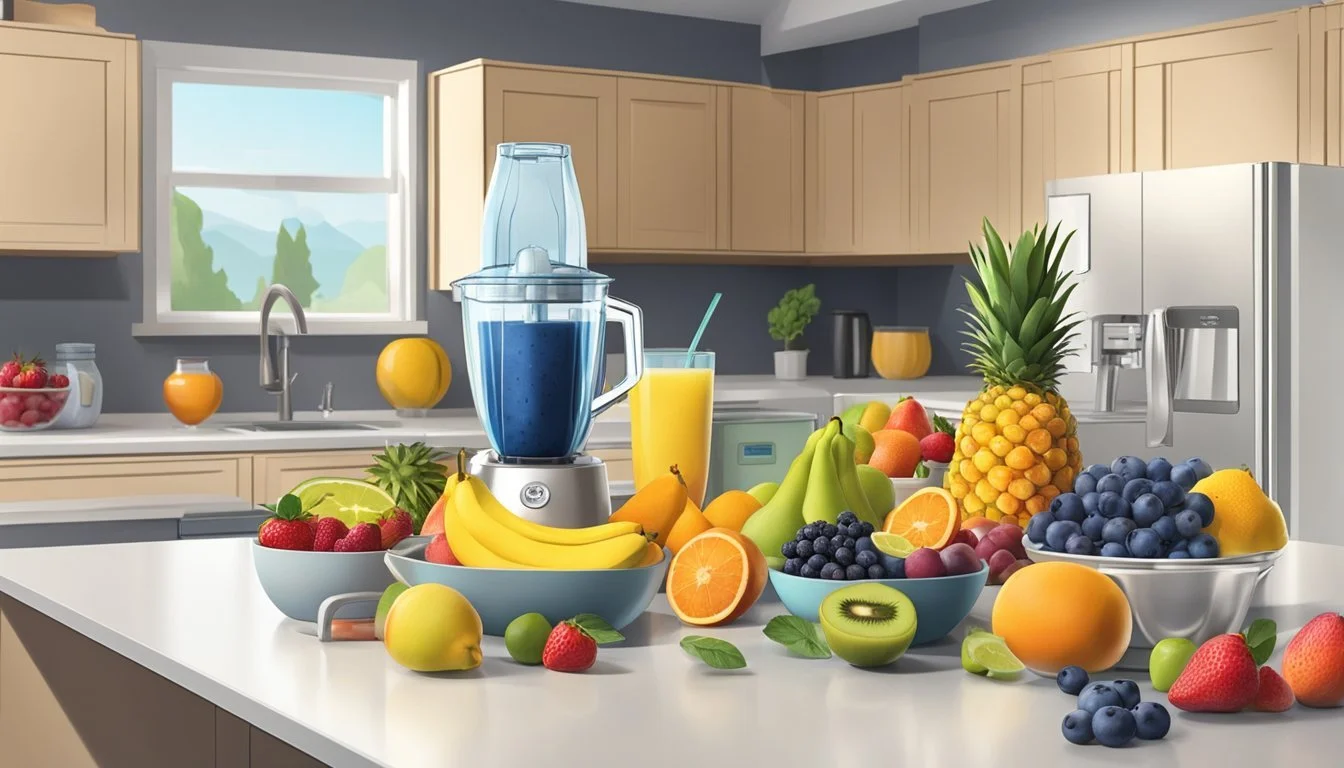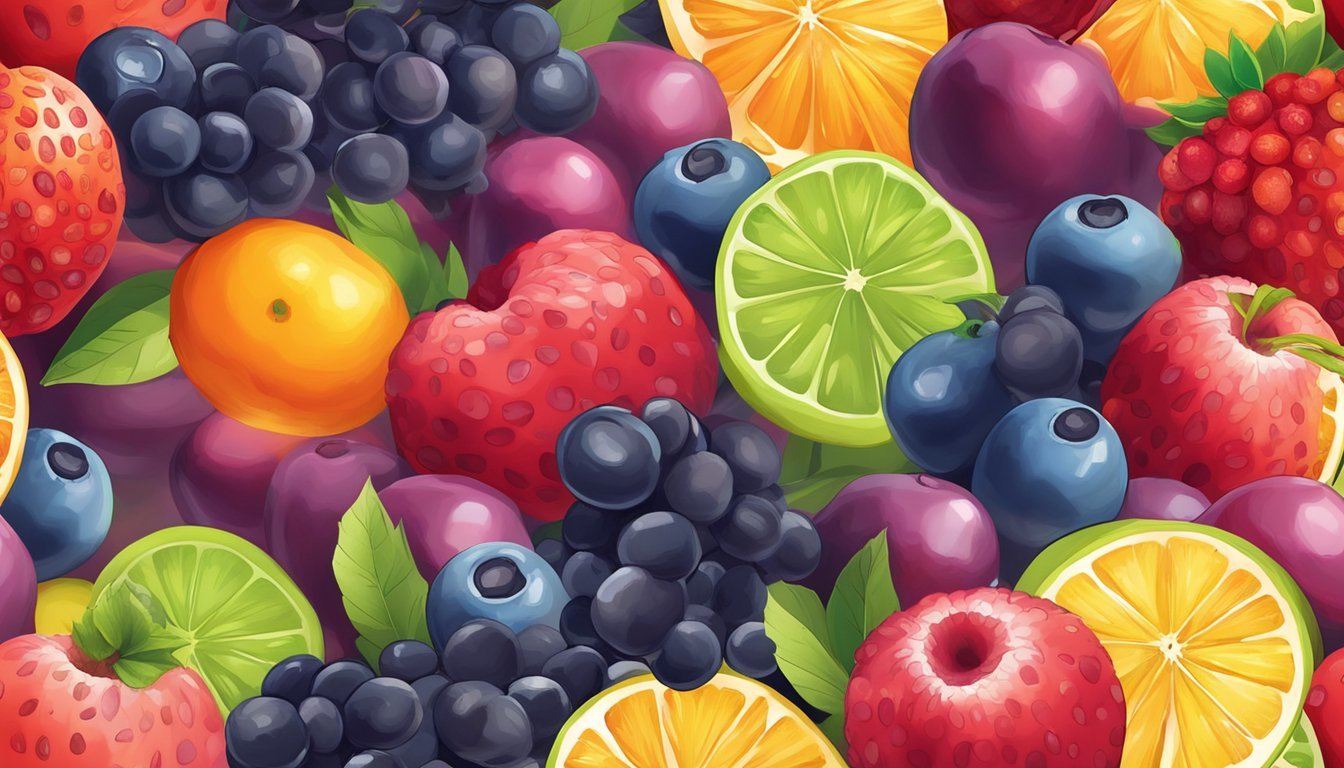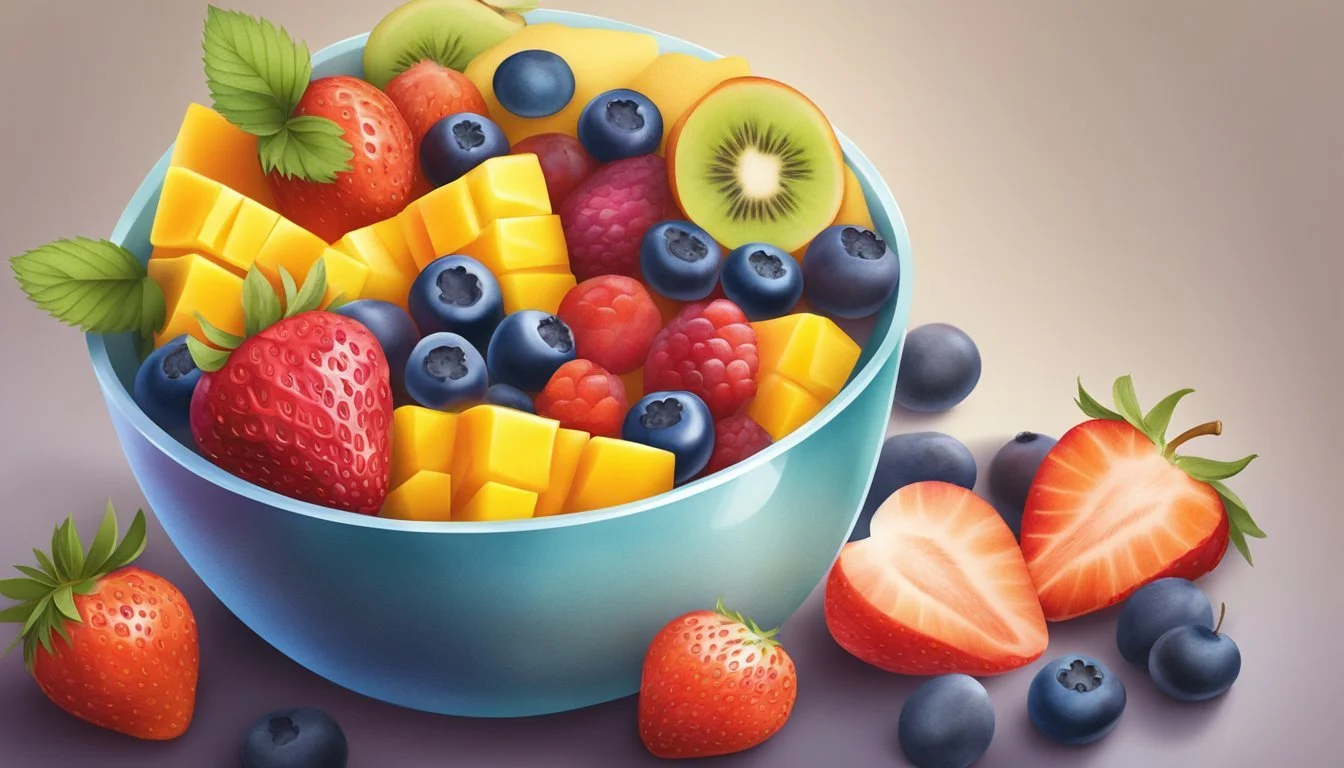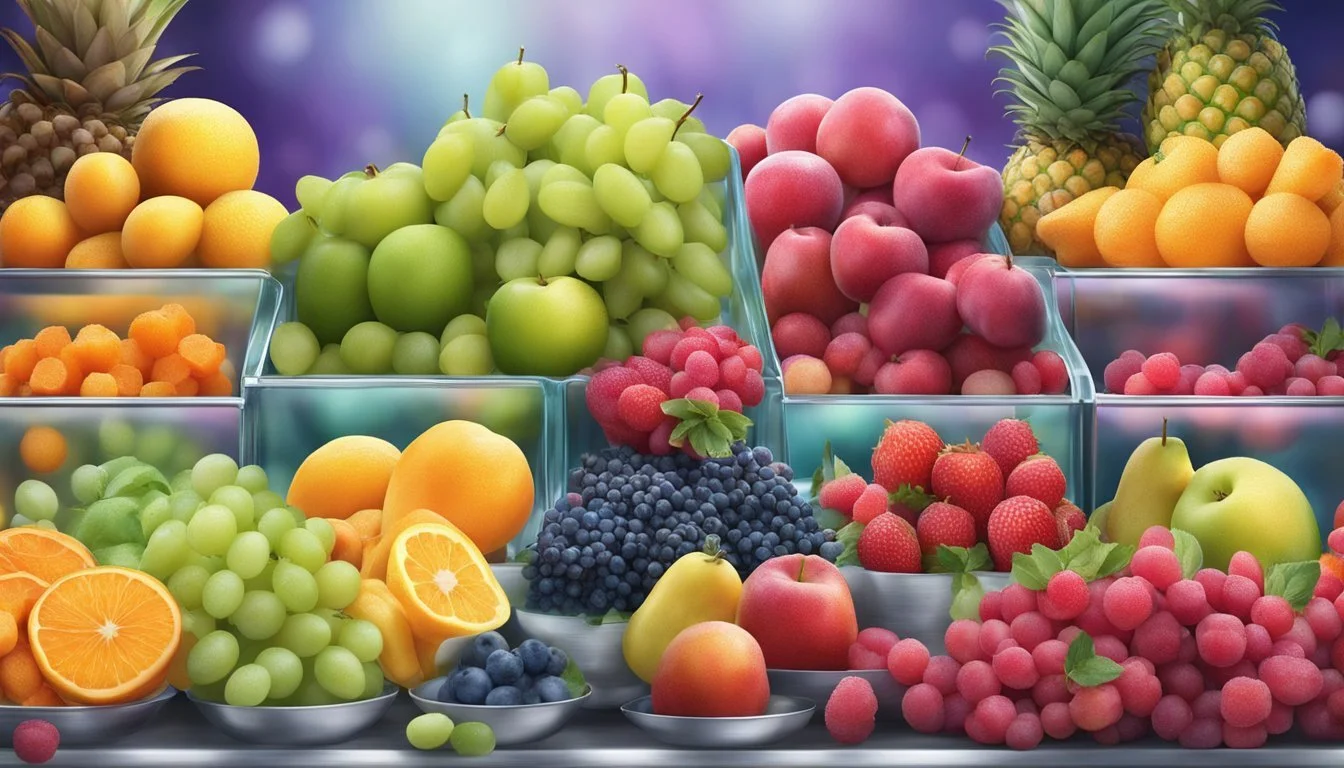Frozen vs Fresh Fruit: Which Option is Healthier for You?
Fruits are an essential part of a healthy diet, providing vital nutrients and antioxidants. Many people wonder whether frozen or fresh fruits offer more nutritional benefits. The debate between frozen and fresh fruit has been ongoing for years, with proponents on both sides arguing for their preferred option.
Both frozen and fresh fruits can be healthy choices, as they retain most of their nutritional value when properly handled and stored. Fresh fruits are often picked at peak ripeness and can be consumed immediately, while frozen fruits are typically harvested at their prime and quickly frozen to preserve their nutrients. This process can sometimes lead to frozen fruits having higher levels of certain vitamins and antioxidants compared to their fresh counterparts that have been stored for extended periods.
The choice between frozen and fresh fruit often comes down to personal preference, availability, and intended use. Fresh fruits may be preferred for immediate consumption or in recipes where texture is crucial. Frozen fruits can be more convenient, have a longer shelf life, and are excellent for smoothies or baking. Regardless of the choice, incorporating a variety of fruits into one's diet is key to reaping their health benefits.
Comparing Nutritional Value
The nutritional content of frozen and fresh fruits can vary depending on several factors. Both options offer valuable nutrients, but their levels may differ due to processing, storage, and transportation methods.
Vitamin and Mineral Content
Frozen fruits often retain high levels of vitamins and minerals due to quick freezing after harvest. This process preserves nutrients effectively. Fresh fruits may have similar nutrient levels if consumed shortly after picking.
Vitamin C content in frozen fruits can be higher than in fresh counterparts. Studies show frozen apricots contain significantly more vitamin C than fresh ones. Iron levels typically remain stable in both frozen and fresh fruits.
Some fruits lose vitamins during freezing. However, the overall nutritional value often remains comparable to fresh options.
Phytonutrient Levels
Phytonutrients, including antioxidants and carotenoids, can be affected differently by freezing. Some frozen fruits show increased antioxidant activity compared to fresh versions.
Frozen apricots, for example, demonstrate higher levels of beta-carotene and polyphenols than fresh apricots. This increase can persist even after months of frozen storage.
Carotenoid content may be better preserved in frozen fruits. The freezing process can make these compounds more accessible to the body.
Impact of Storage and Transport
Storage time and conditions significantly influence nutrient content in both frozen and fresh fruits. Fresh fruits may lose nutrients during transport and while sitting on store shelves.
Frozen fruits maintain their nutritional value for longer periods. They can be stored for months without significant nutrient loss.
Fresh fruits' nutrient content can decline rapidly, especially if not stored properly. Refrigeration helps slow this process, but it doesn't halt it completely.
Fiber content remains relatively stable in both frozen and fresh fruits. It is not significantly affected by freezing or short-term storage.
Health Benefits and Considerations
Frozen and fresh fruits offer various health benefits and nutritional considerations. Both options can contribute positively to overall health when consumed as part of a balanced diet.
Risk Reduction for Diseases
Consuming fruits regularly may help reduce the risk of several chronic diseases. Both fresh and frozen fruits contain antioxidants that protect cells from damage caused by free radicals. These antioxidants have been linked to a lower risk of heart disease and certain cancers.
Fruits are rich in vitamins and minerals essential for maintaining good health. For example, many fruits provide vitamin C, which supports immune function and skin health.
Berries, whether fresh or frozen, are particularly high in polyphenols. These compounds have anti-inflammatory properties and may help protect against cardiovascular diseases.
Dietary Fiber and Digestive Health
Fruits are excellent sources of dietary fiber, which is crucial for digestive health. Fiber aids in maintaining regular bowel movements and preventing constipation.
The fiber content in fruits can help control blood sugar levels by slowing down the absorption of sugars. This is beneficial for managing diabetes and maintaining steady energy levels throughout the day.
Fresh and frozen fruits retain their fiber content, making both options valuable for digestive health. Some fruits with high fiber content include:
Raspberries
Pears
Apples
Blackberries
Sugar Content and Diabetes
While fruits contain natural sugars, they also provide essential nutrients and fiber. The fiber in fruits helps slow down sugar absorption, making them generally safe for people with diabetes when consumed in moderation.
Fresh fruits typically have no added sugars. When choosing frozen fruits, it's important to check labels for added sugars or syrups, which can increase the overall sugar content.
Some fruits have a lower glycemic index, making them better choices for blood sugar management:
Berries
Citrus fruits
Apples
Pears
Portion control is key for people with diabetes or those watching their sugar intake. Both fresh and frozen fruits can be part of a healthy diet when consumed in appropriate amounts.
Convenience and Usage
Frozen and fresh fruits offer distinct advantages in terms of preparation, storage, and versatility. Each option provides unique benefits for different cooking needs and lifestyle preferences.
Preparation and Cooking
Frozen fruits come pre-washed, cut, and ready to use. This saves time and effort in the kitchen. They can be added directly to recipes without thawing. Fresh fruits require washing, peeling, and chopping before use.
Frozen fruits work well in cooked dishes like pies, cobblers, and sauces. Their texture holds up during baking. Fresh fruits are ideal for eating raw or in salads where crispness is desired.
For smoothies, frozen fruits create a thicker, colder texture without ice. They blend easily and provide instant chilling. Fresh fruits may need additional ice for a similar effect.
Shelf Life and Waste Reduction
Frozen fruits have a much longer shelf life than fresh. They can be stored for months in the freezer without spoiling. This reduces food waste and allows for bulk purchasing.
Fresh fruits have a limited window of ripeness. They may spoil quickly if not consumed promptly. Proper storage techniques can extend their life, but not indefinitely.
Freezing preserves fruits at peak ripeness. This locks in nutrients and flavor. Fresh fruits may lose quality over time, even when refrigerated.
Smoothies and Snacks
Frozen fruits excel in smoothie preparation. They create a thick, frosty texture without diluting flavor. No ice is needed, resulting in more concentrated fruit taste.
For quick snacks, frozen fruits can be eaten partially thawed. They offer a refreshing, sorbet-like texture. Fresh fruits provide immediate gratification and a crisp bite.
Frozen berries can be used as toppings for yogurt or cereal. They thaw quickly, releasing juices that add flavor. Fresh fruits maintain their shape and provide a satisfying crunch in these applications.
Factors Affecting Freshness and Ripeness
Freshness and ripeness of fruits depend on several key factors. These include when and how produce is harvested, as well as the methods used to transport and preserve it.
Seasonality and Harvesting
Seasonal availability plays a crucial role in fruit freshness. In-season fruits are typically harvested at peak ripeness, offering optimal flavor and nutrition. Many farms pick fruits slightly early to allow for transportation time.
Supermarkets often source produce from various regions to provide year-round availability. This can impact the ripeness of fresh options. Local, seasonal produce tends to be fresher due to shorter travel distances.
Ripeness indicators vary by fruit type. For example, bananas change color as they ripen, while melons emit a sweet aroma. Some fruits continue to ripen after picking, while others do not.
Transportation and Pesticide Use
Transportation methods significantly affect fruit quality. Rapid cooling and controlled atmospheres help maintain freshness during shipping. However, long-distance transport can lead to nutrient loss and texture changes.
Many farms use pesticides to protect crops during growth and transport. Organic farms rely on natural pest control methods. Washing produce helps remove surface pesticides, but some may remain.
Packaging also impacts freshness. Modified atmosphere packaging can extend shelf life. However, it may affect taste and texture. Some fruits are coated with edible waxes to prevent moisture loss during transport.
Economic and Environmental Perspectives
The choice between frozen and fresh fruits impacts both personal finances and ecological footprints. Costs, availability, and sustainability considerations play key roles in this decision.
Cost Comparison
Frozen fruits often prove more economical than their fresh counterparts. They have longer shelf lives, reducing waste and allowing for bulk purchases. Fresh fruits can be pricier, especially when out of season or imported from distant locations.
Seasonal variations affect prices significantly. Local, in-season fresh fruits may be cheaper during peak harvest times. However, frozen options maintain consistent pricing year-round.
Some frozen fruits come pre-cut, saving time and labor costs for consumers. This convenience factor can offset potential price differences.
Sustainability and Food Miles
Fresh fruits typically have lower carbon footprints when sourced locally and in-season. They require minimal processing and packaging.
Frozen fruits allow for year-round consumption with reduced food waste. The freezing process preserves nutrients and extends shelf life.
Transportation emissions vary. Imported fresh fruits rack up significant food miles. Frozen fruits, while energy-intensive to process, can be shipped more efficiently in bulk.
Packaging differs too. Fresh fruits often use minimal or no packaging. Frozen varieties require plastic bags or boxes, contributing to waste concerns.
Water usage is another factor. Fresh fruit production may demand more water locally, while frozen processing can distribute this impact across regions.
Sensory Qualities and Consumer Preferences
The sensory qualities of fruit significantly impact consumer preferences and choices between fresh and frozen options. Taste, aroma, texture, and appearance all play crucial roles in shaping consumer experiences and perceptions.
Taste and Aroma
Fresh fruits often deliver more vibrant and complex flavors compared to their frozen counterparts. Strawberries and raspberries, when fresh, tend to have a brighter, more pronounced taste profile.
Frozen fruits may experience some flavor loss during the freezing process. However, they can still retain much of their original taste, especially when frozen at peak ripeness.
Aroma plays a key role in perceived flavor. Fresh berries typically emit stronger, more enticing scents that enhance the overall eating experience.
Some consumers find frozen fruits to have a slightly muted aroma compared to fresh varieties. This can impact their perceived freshness and appeal.
Texture and Appearance
Fresh fruits generally offer a crisp, juicy texture that many consumers prefer. Strawberries and raspberries maintain their natural firmness and bite when fresh.
Frozen fruits often become softer upon thawing. This can lead to a mushier texture, which some consumers find less appealing for raw consumption.
The crunch factor of fresh fruits is particularly important for many consumers. It contributes to the perceived freshness and quality of the produce.
Visually, fresh fruits typically have brighter colors and a more appealing appearance. This visual appeal can significantly influence consumer choices at the point of purchase.
Frozen fruits may appear slightly duller or less vibrant after thawing. However, they can still maintain an attractive appearance when used in cooking or baking applications.
Specific Considerations for Frozen Produce
Frozen fruits and vegetables undergo specific processing methods that can affect their nutritional content and quality. These techniques aim to preserve flavor and nutrients while extending shelf life.
Blanching and Nutrient Retention
Blanching is a common pre-freezing technique used for vegetables. This process involves briefly exposing produce to hot water or steam. It helps preserve color, texture, and nutritional value by inactivating enzymes that cause deterioration.
Blanching can lead to some nutrient loss, particularly water-soluble vitamins like vitamin C. However, it can also increase the bioavailability of certain compounds. For example, lycopene in tomatoes becomes more accessible after heat treatment.
Some vegetables, such as peas and corn, may retain more nutrients when frozen compared to their fresh counterparts due to rapid processing after harvest.
Additive and Preservative Use
Frozen fruits and vegetables often contain fewer additives than other processed foods. Many are frozen without any additional ingredients. However, some products may include preservatives or added sugar.
Ascorbic acid (vitamin C) is sometimes added to frozen fruits to prevent browning and act as a natural preservative. This can actually boost the vitamin C content of the final product.
Some frozen fruit products, especially those intended for smoothies or desserts, may contain added sugars. It's important to check labels for any unwanted additives or sweeteners.
Salt may be added to some frozen vegetables, particularly those in sauces or seasoned blends. Consumers watching their sodium intake should be aware of this potential addition.
Alternative Options and Comparisons
Fresh and frozen fruits aren't the only choices available. Canned options offer convenience and long shelf life. Each type has unique characteristics that affect nutritional value and taste.
Canned Fruits and Vegetables
Canned fruits and vegetables provide a shelf-stable option. They're often picked at peak ripeness and processed quickly. Many canned fruits come packed in syrup or juice. Light syrup or juice-packed options have less added sugar.
Canned vegetables may contain added sodium for preservation. Low-sodium or no-salt-added varieties are available. Some nutrients, like vitamin C, can decrease during the canning process.
Canned produce often retains fiber and minerals well. Lemon juice is sometimes added to canned fruits to prevent browning and boost flavor.
Comparing Fresh, Frozen, and Canned
Fresh produce offers the highest vitamin C content when consumed quickly after harvest. Frozen fruits and vegetables lock in nutrients at their peak.
Canned options can be higher in sodium but often retain minerals well. Here's a quick comparison:
Type Pros Cons Fresh Best flavor, no additives Short shelf life Frozen Long-lasting, convenient Texture changes possible Canned Shelf-stable, affordable May have added salt/sugar
Boiling water can reduce nutrient content in fresh and frozen vegetables. Steaming or microwaving helps retain more nutrients.
Each option has its place in a healthy diet. Mixing fresh, frozen, and canned produce ensures variety and convenience.

